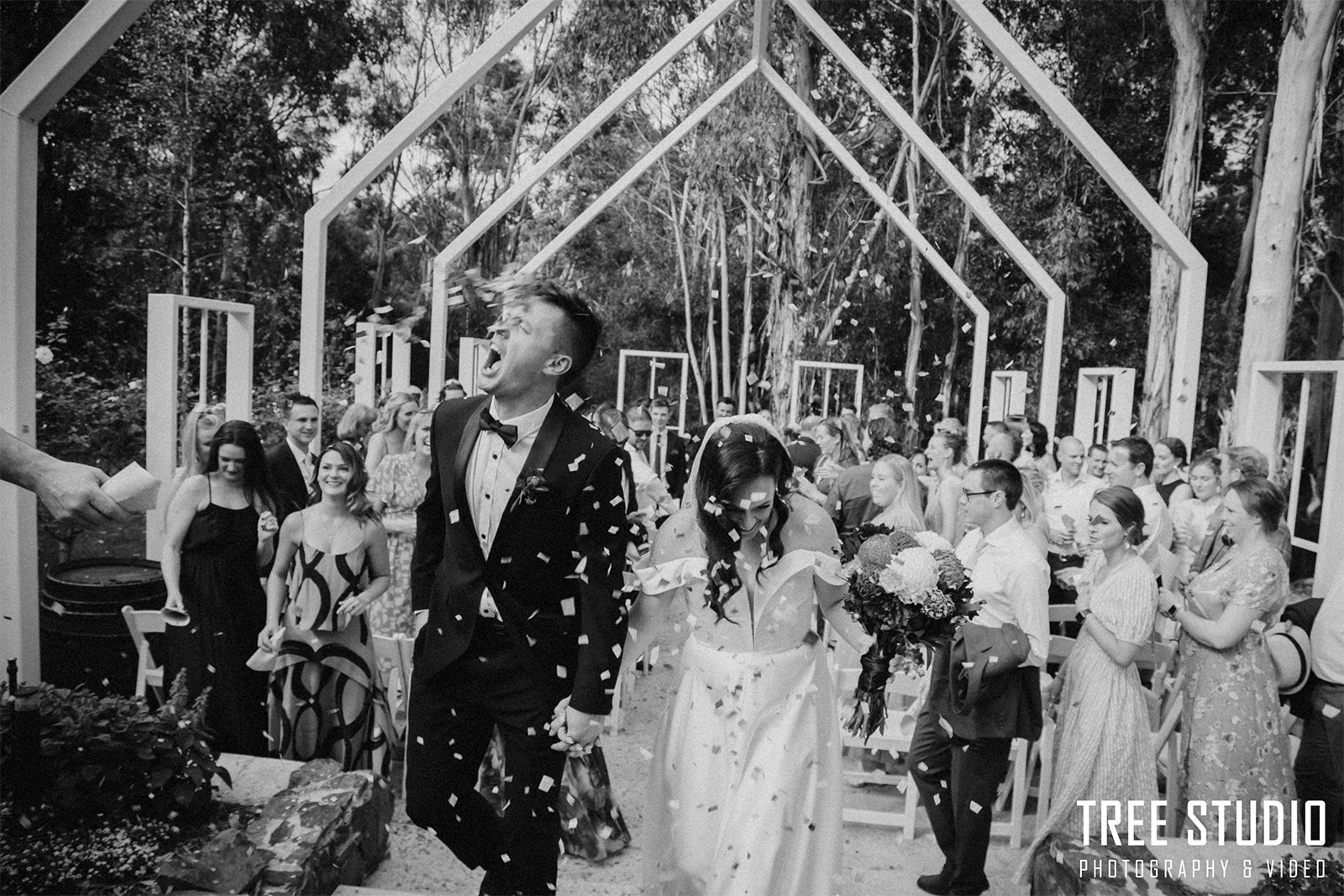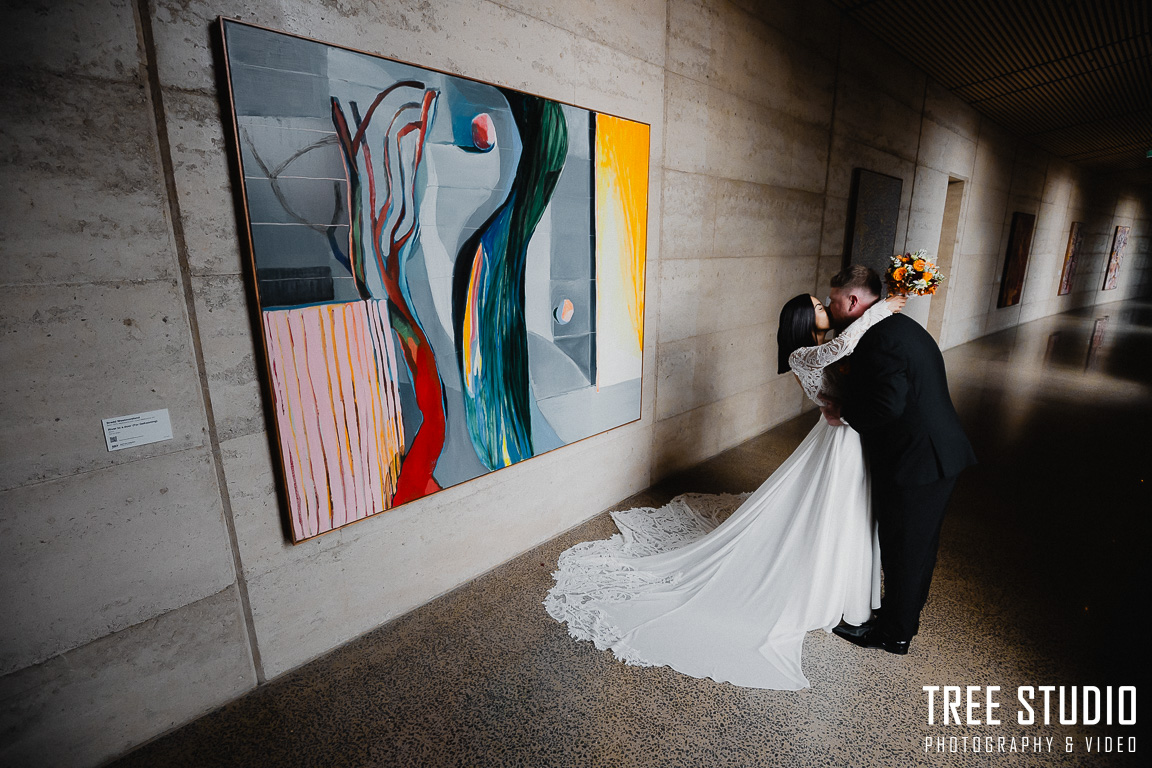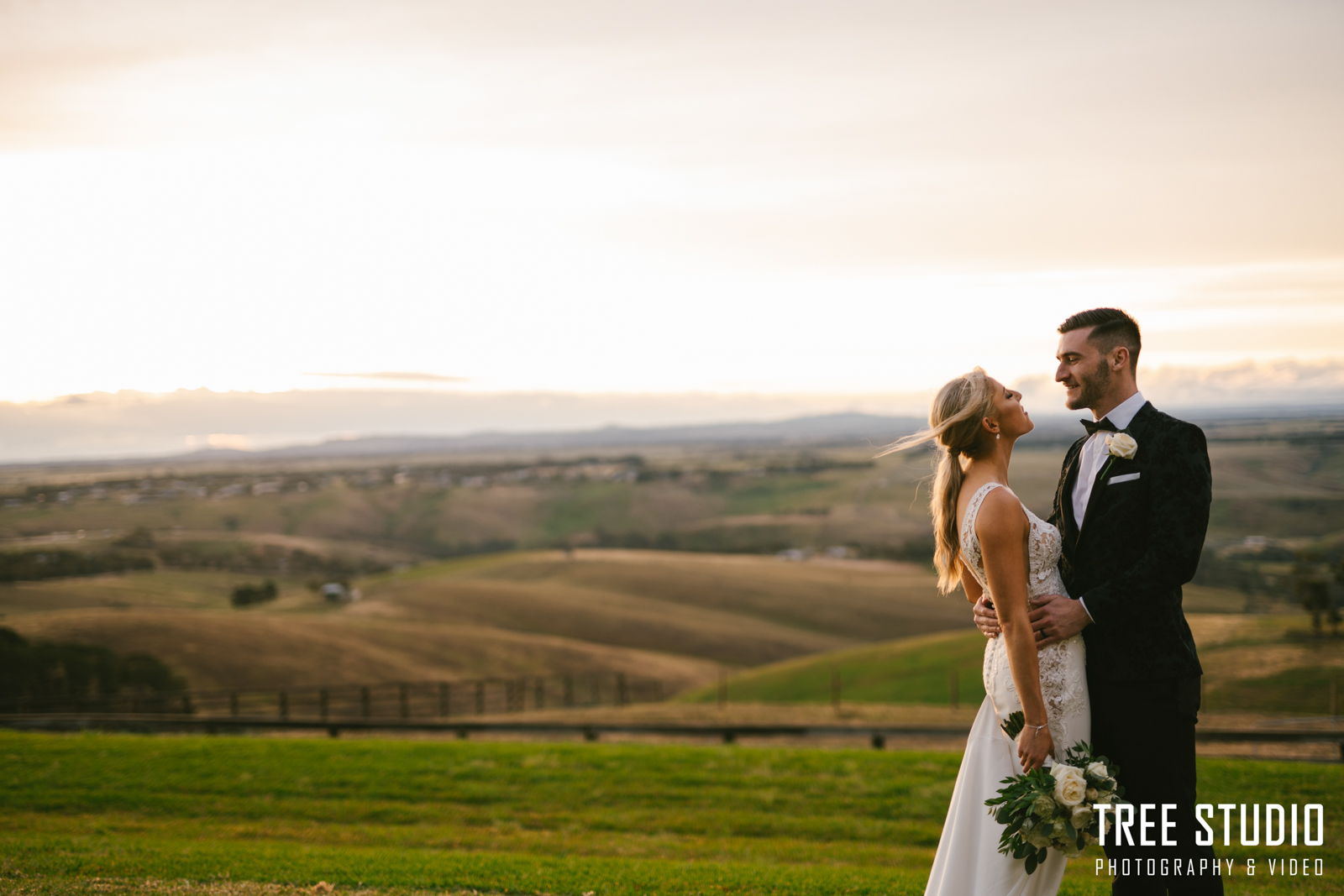
Hello everyone, my name is Nick, a Melbourne wedding photographer from Tree Studio. Today I am going to share some useful tips for taking photos of a wedding ceremony, let’s get started.
Shooting a wedding ceremony is not an easy job, and it always full of challenges as well as opportunities. In this video, I’m going to share some useful tips of how to shoot a wedding ceremony.
As you may know, the wedding ceremony is one of the most important parts of a wedding, it always stands for the beginning of the brand-new life of two people and is full of happiness and blessing from the newlyweds’ close family and friends. As a wedding photographer, the ceremony is the part that really needs to be focused on, as it is always non-repeatable and full of rememberable memories of the couples.
Normally you need to arrive at the ceremony a bit earlier than the beginning of a ceremony, as you will need some time to get ready for the upcoming jobs. A thirty minutes prior arrival to the commencement of a ceremony would be a decent amount of time. You can set up the gear and capture the decoration of the ceremony, as well as the footage of guests arriving, and grooms mingling with guests, which show the tiny evidence of emotions among them. It is also a good time to communicate with the videographer and celebrant regarding the plan of the ceremony to make sure you are on the same page. There won’t be specific rules for you to choose a place to take photos during a civil ceremony, but be aware that at some church ceremonies, the altar area might not be able to access, so make sure you’ve discussed with the priest and understand where you could and could not to go. Talk to the videographer about where the video cameras will be set so that you won’t block their view.
By walking around the ceremony site, you will get some ideas of how you going to stand or stay during the ceremony, you will find out the locations of all dedicated decorations as well. So, make sure you’ve captured the decoration, whether it is the welcome sign, flower arbor, sophisticated designed ceremony site, or any special illustrations of loved ones. You could choose the lens you like for this part, good composition and exposure will help you make your job halfway done. You can use a wide-angle lens to take photos of the entire view of the ceremony and use a telephoto lens to capture some details. You’d better finish taking photos of the decoration before the guest arrives, which will allow you to have a clean and neat shoot. Don’t be afraid to adjust the arrangement of the setup for a better shoot, but don’t forget to restore them later.
After capturing the decoration, I will focus on the people, those who should be the main actors of the wedding. In general, the groom and groomsmen will be at the ceremony before the start. Depending on the culture and religious background, there might be a formal entrance of the groom and the parents of the groom, so make sure you understand the entire process of the ceremony so that you won’t miss any of the key moments. If the groom just randomly walks in and has some greeting with the guests, you can still capture some fun moments of laughter between the groom and guests.
To fulfill my demand more efficiently, I would like to use two cameras, one with a zoom lens, whether it is a 24-70 or 24-105 lens, and another one with an 85 or 70-200 lens if I thought I need more zoom-in photos. I will use the same lens for the rest of the ceremony as well. I personally like to shoot wide open for a shallow depth of field effect, this also helps me to keep a iso level as low as I can for better image quality. Turning to a smaller aperture if you want more subjects in focus. The choice of aperture really depends on how you want the photos to be presented.
When it gets close to the time for the beginning of the ceremony, you should be more careful about what will happen next. Rather than waiting for the arrival of the bride, make sure you have good communication with the celebrant so you can have a clear idea of the flow of the ceremony. If everything goes well on the wedding day, the celebrant or priest will make an announcement several minutes before the ceremony, telling everyone that the ceremony will start soon, and that is the signal for you to be aware of. It is also a good time to check the battery level of the cameras, as you may have a limited chance to change your dead batteries during the ceremony. If the bride would like the footage of the bridal car’s arrival and get off the car, you will need to capture the corresponding moments. After shooting the bride’s arrival, you need to go back to where the groom is and get ready for the next part, walking down the aisle.
Depending on the style and cultural background, the entrance of the bride and bridesmaids may be different. For some civil weddings, walking down the aisle could be relaxing and funny. There might be flower girls or boys who walk in first, followed by each bridesmaid, and the bride will be last. The bride may walk in with or without the parent, make sure you fully capture the entire walking down the aisle until the bride arrives at the front and stand next to the groom.
For some church weddings, especially for the Orthodox church, the bridal party will follow the priest walking down at the same time, which means the next person may not wait until the former person fully arrives at the groom’s side, so do not block the aisle and try to capture each one of the bridal party walks down.
Make sure you’ve captured several portrait and landscape photos for each one of the bridal parties, putting the subjects in the lower middle part of the photos would be a suitable composition here. And do not use a low shutter speed as people are moving and a low-speed shutter will make them blurry, try to keep the shutter speed faster than 1/160 s in here.
By the end of the aisle, when the bride meets the groom, there might be some little ritual, such as the bride’s parent handing over the bride to the groom or unveiling the bride, so make sure you concentrate at all times during the walking down the aisle.
After the bride’s entrance, the ceremony will start and that’s the time for you to have a little bit of break while still keeping an eye on what is happening. Try to find several places to capture the ceremony from different angles when the celebrant tells the love story about the couple, and you should focus on both the bridal party and the guests, as emotions would sometimes surface from them. As usual, parents and close relatives will be sitting in the front row and it is a good time to capture some emotional photos of their expressions.
As the ceremony goes on, there will be some important parts you need to make sure that are stored in your cameras. For a civil wedding, it is common for the couple to talk about their vow before exchanging their rings. There won’t be a certain length of a vow, so if you can’t shuffle around taking photos from different angles due to a short vow, make sure you stand in the middle of the aisle so that you can easily capture everything. The ring exchange will normally come next, so be sure to take some photos of this part and it is nice to have some zoom-in photos here. After the exchange of rings, you should be well-positioned in the middle of the aisle, as the first kiss will be the next and the most important thing you need to capture. You can use a high-speed shutter to take multiple photos when the couple is kissing, so you won’t miss this moment. For some cultures, there might be some rituals during this time as well, such as the Jewish wedding, there will be a ritual of smashing the glass before the couple kisses.
Then the couple may be invited to sign the wedding certificate, you can now get a bit closer to the couple to capture this moment. There will be two witnesses signing the certificate as well, so make sure you shoot all of them. You could take photos of the couple holding their certificate, along with the witnesses as they’ve done the signing.
The couple will go back to the front waiting for walking down the aisle with hand holding. You should stand in the middle of the aisle again, keep several meters from them and get prepared for what is going on next. After the celebrant introduces the newlyweds, the couple may start walking, sometimes the guests will have some flower paddle or confetti thrown over the couple, and the couple may have kisses or hugs with them. This is the time for capturing some candid and lovely photos. I prefer to use a wider view to capture both the newlyweds and the guests, so a 24 mm or wider focal length is preferred.
After the couple exits, the guests will then come and express their congratulations individually. Photos taken during this time will be valuable memories for the newlyweds. The couple may want a large group photo with all the attendances of the ceremony, so find a space that everyone can be fitted in for this photo. Make sure you’ve put the bridal party and immediate family in front standing next to the couple, so they won’t block by the other guests. Smooth and diffused lighting will be the ideal light condition for the photos. If you can’t find such a place and really need to put them under the sun, make sure they are not facing toward the sun.
Then it may come to the family photos session. It’s crucial to get everyone together to do this before they start wandering around. It is a good idea to advise the couple to prepare a family photo list as this will help to finish this part in a more organized way. Try to find a clean or natural background with lots of greenery for the shoots, and try to find somewhere in the shade to avoid harsh sunlight. Before pressing the shutter, use a loud voice to attract the attention of the people who are going to be shot and ask them to look at your camera. Make sure you’ve taken multiple photos for each group as sometimes someone may have their eyes closed or not looking in the proper direction. Don’t be afraid to adjust someone’s dress or ask someone to move if his or her face is blocked, make sure each one can be seen and will look neat in the photo. Try to capture both full-body and half-body shots, but you should always keep in mind that the photos of the full body of the people are the top priority. You should avoid leaving the shoes or some parts of the body out of the frame when taking full-body photos as well. Reduce your aperture stop to make sure each one in the photos is shown clearly, so an F/4 or higher figure is recommended. For large group photos, the F/8 or higher will be ideal.
Double-check with your couple after all the family photos are done in case of the couple wants more, and don’t forget to discuss where is the next location with them before you depart.
In summary, there are several tips for shooting a wedding ceremony.
Firstly, always be early and prepared. Then, have good communication among the crew members. After that, concentrate on the main actors of the ceremony, and be aware of the key parts, walking down the aisle, important rituals, exchange of vows and rings, first kiss, signing the certificate, and walking out as newlyweds. When doing the group and family photos, make sure you’ve chosen the correct setting for the camera and the right composition.
Lastly, please remember, ceremony style and length will differ due to different cultures and religious backgrounds, a stress-free civil ceremony may only last for 15 mins, and a traditional ceremony could go for 1.5 hours. There won’t be a fixed formula for shooting a ceremony, so always focus on the ceremony you are shooting. These are the tips for you to capture a wedding ceremony, and this is Nick from Tree Studio, see you on the next video.



